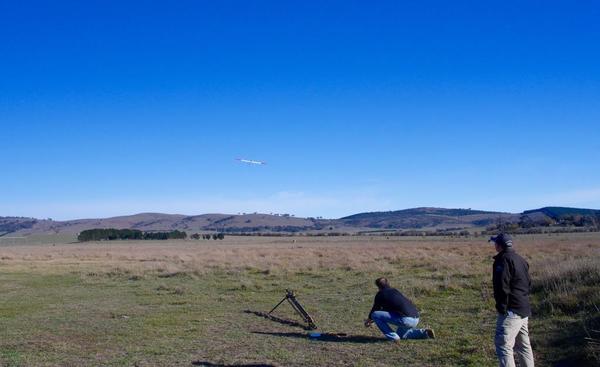DRONES are set to be used to monitor pest animal populations in the Southern Downs region.
Operating under its CASA-granted commercial drone licence, Ninox Robotics is utilising its military grade drones in partnership with Southern Downs Regional Council to monitor pest animal populations in the Southern Downs region of Queensland, along the state’s border with New South Wales.
The project will be led by new Australian technology company Ninox Robotics’ Chief Pilot, Colin Smith, a former major in the Australian Defence Force, and his team of specially-trained UAS pilots and technicians.
“Our UAS services are unlike anything else in the market today, with the potential to do more and be in more places than any other UAS provider, at an attainable price point for multiple industries. Our team has completed a rigorous training process and we are thrilled to start putting this highly-advanced technology to work for businesses and government organisations across the country,” Mr Smith said.
Craig Magnussen, Pest Management Officer with Southern Downs Regional Council, said council was looking to put the technology to use in the pest animal control field, to accurately gauge populations and improve on current practices.
“We are excited by the opportunities the technology presents, particularly in detecting animals over vast areas of inaccessible terrain and making traditional broad scale pest animal control methods such as aerial baiting and shooting more efficient,” Mr Magnussen said.
“Having witnessed some of Ninox Robotics’ early trial work, council and its partners in this project, Goondiwindi Regional Council and Granite Borders Landcare Committee are very pleased to be a part of the first commercial application of the technology,” he added.
Having received final regulatory approval from the Civil Aviation Safety Authority (CASA), Ninox Robotics will begin commercial operations this month, deploying its class leading unmanned aerial systems (UAS) for customised services to government, NGOs and private sector clients.
Ninox Robotics’ flexible services can be applied to infrastructure and asset management as well as biosecurity, conservation and emergency services.
They are designed to provide efficient and safe monitoring at a cost-effective price.
Marcus Ehrlich, Managing Director of Ninox Robotics says the project will offer a glimpse of the versatility and unique capabilities of the UAS in enabling more informed decisions, pre-emptive issue management and improved response, security and safety.
“We are eager to be working alongside forward-thinking organisations such as Southern Downs Regional Council who are looking for intelligent, cost-effective solutions to leverage practical, comprehensive information in real-time.
“The amount of interest we’ve received so far across different industries and levels of government signals that Australian businesses and landholders are eager to see how these drones can make a difference in their bottom line,” added Ehrlich.
Ninox Robotics offers an array of smart, high-tech options for Australian government agencies, landholders and businesses in dealing with a variety of problems afflicting the continent.
It has applications across a variety of industries including Infrastructure, Agriculture, Biosecurity, Emergency Response and Security and Research.
Applications include the ability to detect animals, monitor plants or land areas, create detailed maps, improve fire management and search and rescue operations, provide surveillance and more. The project deployment is proposed to be undertaken early next week.
There will be an opportunity for landholders and media to attend and witness the UAS in operation – tentatively scheduled for mid-morning on June 29 or 30 – with the final date subject to CASA approval.
Landholders interested in attending can contact Southern Downs Regional Council’s Pest Management Officer, Craig Magnussen, on 1300 MY SDRC (1300 697 372) with their details for confirmation of the date, time and location. The Southern Downs Regional Council project is made possible with funding from the Queensland Government’s Drought Relief (Feral Animals) program.







